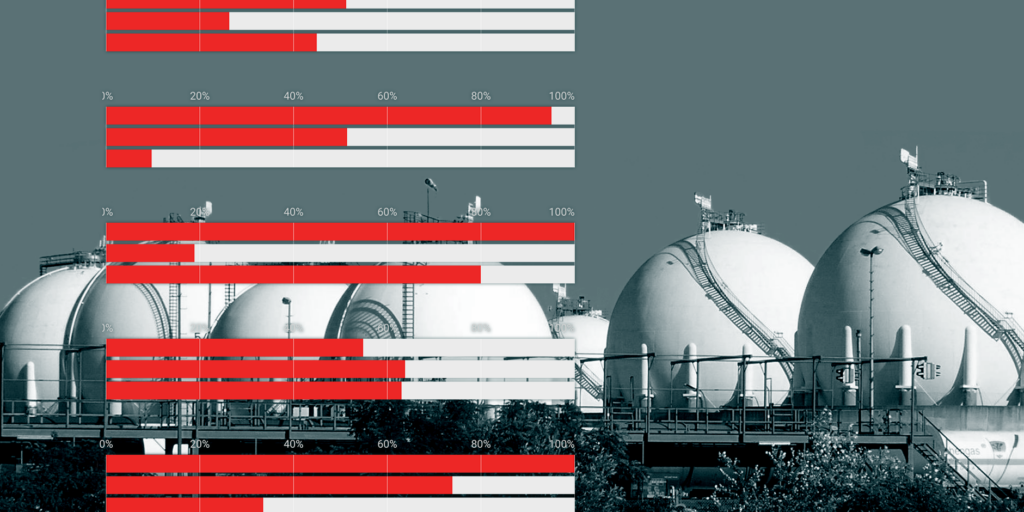French people are losing confidence in the Paris Olympics
March 28th, 2024
3 min
Datawrapper lets you show your data as beautiful charts, maps or tables with a few clicks. Find out more about all the available visualization types.
Our mission is to help everyone communicate with data - from newsrooms to global enterprises, non-profits or public service.
We want to enable everyone to create beautiful charts, maps, and tables. New to data visualization? Or do you have specific questions about us? You'll find all the answers here.
Data vis best practices, news, and examples
100+ articles that explain how to use Datawrapper
Answers to common questions
An exchange place for Datawrapper visualizations
Attend and watch how to use Datawrapper best
Learn about available positions on our team
Our latest small and big improvements
Build your integration with Datawrapper's API
Get in touch with us – we're happy to help
This article is brought to you by Datawrapper, a data visualization tool for creating charts, maps, and tables. Learn more.

Hi, this is Ivan — a developer here at Datawrapper. This week we’ll look at how Europe’s dependence on Russian energy imports may have played a role in the invasion of Ukraine.
A week ago something happened that most did not think could become reality: a full-scale war on the European continent. Yes, annexations, disputes over territories, and military conflicts with large casualty numbers have been ongoing all over the world. But for Russia to launch a direct attack on Ukraine was unthinkable. And then it happened.
There are a number of reasons that must have led the Russian head of state, Vladimir Putin, to give the order to invade Ukraine. Let’s assume that Putin tried to make this decision rationally (a bold claim, I know). A part of the decision-making must have involved weighing up a potential economic response from the EU, US, and UK and the effects this response would have on the Russian economy.
There is one fact which must have led Putin to believe that economic sanctions from western countries would be limited: many European countries are heavily reliant on Russia for imports of energy sources such as natural gas and oil.
If you control a state’s energy supply, you might assume that that state has limited ability to punish you economically, even for something as serious as invading your neighbor. After all, what government would risk its citizens' losing access to basic needs such as heating? If Russia shuts off the fuel supply, industry in some European countries may grind to a halt and infrastructure will be at risk of collapse.
Right now, a week after the invasion began, it seems that Putin underestimated the willingness of western countries to impose heavy economic sanctions. Russian businesses, banks, and individuals have been targeted and effects are already being felt on the whole of Russian economy.
One notable exception: imports of energy sources. As Russian forces are advancing deeper into Ukraine and surrounding major Ukrainian cities, as casualties are mounting, the gas is still flowing westwards (at least as of today). It’s difficult to rapidly wean oneself off this supply after spending years making oneself dependent on it.
But things may yet change quickly. Already shortly before the invasion, the German chancellor Olaf Scholz announced a stop to the new gas pipeline project Nord Stream 2, which would have increased German and European reliance on Russian gas. Poland has not renewed its contract for gas imports from Russia and is in the process of replacing it with imports from Norway.
Now, with an all-out war going on nearby, more European states are likely to change their import policies. It’s even possible that Russia itself will terminate exports in response to economic sanctions from western countries. No one knows how or when this conflict is going to end but the human and economic costs will be enormous for decades to come.
To calculate share of imports from Russia for each type of energy source, I used data from Eurostat. I calculated the share for all European countries and then chose those with the highest import ratios to emphasize the dependence. For the chart, I used a stacked bar chart to highlight differences between imports from Russia and elsewhere. I picked a stacked bar chart over a split bar chart because it grants each bar extra prominence by giving it the full width of the chart.
That’s it from me for this week. It was tough writing this Weekly Chart while following the latest news about the war — I hope that this nightmare is over as soon as possible. We’ll see you next week.
Comments